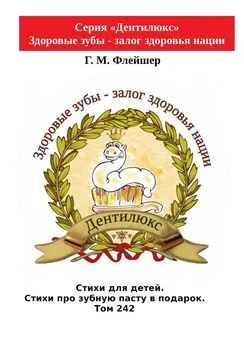Нгуэн-Ким Май Тхи - Комично, как все химично! [Почему не стоит бояться фтора в зубной пасте, тефлона на сковороде, и думать о том, что телефон на зарядке взорвется]
- Название:Комично, как все химично! [Почему не стоит бояться фтора в зубной пасте, тефлона на сковороде, и думать о том, что телефон на зарядке взорвется]
- Автор:
- Жанр:
- Издательство:Эксмо
- Год:2021
- Город:Москва
- ISBN:978-5-04-115446-2
- Рейтинг:
- Избранное:Добавить в избранное
-
Отзывы:
-
Ваша оценка:
Нгуэн-Ким Май Тхи - Комично, как все химично! [Почему не стоит бояться фтора в зубной пасте, тефлона на сковороде, и думать о том, что телефон на зарядке взорвется] краткое содержание
Комично, как все химично! [Почему не стоит бояться фтора в зубной пасте, тефлона на сковороде, и думать о том, что телефон на зарядке взорвется] - читать онлайн бесплатно ознакомительный отрывок
Интервал:
Закладка:
• Watson, R. (2008). European agency rejects links between hyperactivity and food additives. BMJ: British Medical Journal, 336(7646), 687.
• EFSA Panel on Food Additives and Nutrient Sources (ANS). (2016). Scientific Opinion on the re-evaluation of benzoic acid (E 210), sodium benzoate (E 211), potassium benzoate (E 212) and calcium benzoate (E 213) as food additives. EFSA Journal , 14(3), 4433.
• Brief von Erick M. Carreira: Hier lässt sich die Originalquelle nicht mehr rekonstruieren. Der Brief wurde irgendwann geleakt und kursiert seitdem im Netz. Ein Foto davon findet man etwa unter: http://www.chemistry-blog.com/tag/carreira– letter/; die hier zitierte Übersetzung stammt von Mai Thi Nguyen-Kim.
• Zeng, X.-N., et al. Analysis of characteristic odors from human male axillae. Journal of Chemical Ecology 17.7 (1991): 1469–1492.
• Fredrich, E., Barzantny, H., Brune, I. & Tauch, A. (2013). Daily battle against body odor: towards the activity of the axillary microbiota. Trends in Microbiol 21(6), 305–312.
• The Chemistry of Body Odours – Sweat, Halitosis, Flatulence & Cheesy Feet. Compound Interest, 14. April 2014. Siehe: https://www.compoundchem.com/2014/04/07/ the-chemistry-of-body-odours-sweat-halitosis-flatulence-cheesy-feet/.
• Suarez, F. L., Springfield, J. & Levitt, M. D. (1998). Identification of gases responsible for the odour of human flatus and evaluation of a device purported to reduce this odour. Gut, 43(1), 100–104.
• Fromm, E. & Baumann, E. (1889). Ueber Thioderivate der Ketone. Berichte der deutschen chemischen Gesellschaft, 22(1), 1035–1045.
• Baumann, E., & Fromm, E. (1889). Ueber Thioderivate der Ketone. Berichte der deutschen chemischen Gesellschaft, 22(2), 2592–2599.
• Krewski, D., Yokel, R. A., Nieboer, E., Borchelt, D., Cohen, J., Harry, J., … & Rondeau, V. (2007). Human health risk assessment for aluminium, aluminium oxide, and aluminium hydroxide. Journal of Toxicology and Environmental Health, Part B, 10(S1), 1–269.
• Bundesinstitut für Risikobewertung (2014). Aluminiumhaltige Antitranspirantien tragen zur Aufnahme von Aluminium bei. Stellungnahme Nr. 007/2014. Siehe: http://www.bfr.bund. de/cm/343/aluminiumhaltigeantitranspirantien-tragen-zur-aufnahme-von-aluminium-bei.pdf.
• Callewaert, C., De Maeseneire, E., Kerckhof, F. M., Verliefde, A., Van de Wiele, T. & Boon, N. (2014). Microbial odor profile of polyester and cotton clothes after a fitness session. Applied and environmental microbiology, AEM-01422.
• Hampson, N. B., Pollock, N. W. & Piantadosi, C. A. (2003). Oxygenated water and athletic performance. JAMA, 290(18), 2408–2409.
• Eweis, D. S., Abed, F. & Stiban, J. (2017). Carbon dioxide in carbonated beverages induces ghrelin release and increased food consumption in male rats: Implications on the onset of obesity. Obesity research & clinical practice, 11(5), 534–543.
• Vartanian, L. R., Schwartz, M. B. & Brownell, K. D. (2007). Effects of soft drink consumption on nutrition and health: a systematic review and meta-analysis. American journal of public health, 97(4), 667–675.
• Mourao, D. M., Bressan, J., Campbell, W. W. & Mattes, R. D. (2007). Effects of food form on appetite and energy intake in lean and obese young adults. International journal of obesity, 31(11), 1688.
• Baggott, M. J., Childs, E., Hart, A. B., De Bruin, E., Palmer, A. A., Wilkinson, J. E. & De Wit, H. (2013). Psychopharmacology of theobromine in healthy volunteers. Psychopharmacology, 228(1), 109–118.
• Judelson, D. A., Preston, A. G., Miller, D. L., Muñoz, C. X., Kellogg, M. D. & Lieberman, H. R. (2013). Effects of theobromine and caffeine on mood and vigilance. Journal of clinical psychopharmacology, 33(4), 499–506.
• Mumford, G. K., Evans, S. M., Kaminski, B. J., Preston, K. L., Sannerud, C. A., Silverman, K. & Griffiths, R. R. (1994). Discriminative stimulus and subjective effects of theobromine and caffeine in humans. Psychopharmacology, 115(1–2), 1–8.
• Li, X., Li, W., Wang, H., Bayley, D. L., Cao, J., Reed, D. R., … & Brand, J. G. (2006). Cats lack a sweet taste receptor. The Journal of nutrition, 136(7), 1932S-1934S.
• Li, X., Glaser, D., Li, W., Johnson, W. E., O’brien, S. J., Beauchamp, G. K. & Brand, J. G. (2009). Analyses of sweet receptor gene (Tas1r2) and preference for sweet stimuli in species of Carnivora. Journal of Heredity, 100(S1), 90–100.
• Huth, P. J. (2007). Do ruminant trans fatty acids impact coronary heart disease risk? Lipid technology, 19(3), 59–62.
• Joint, F. A. O. & Consultation, W. E. (2009). Fats and fatty acids in human nutrition. Ann Nutr Metab, 55(1–3), 5–300.
• Nishida, C. & Uauy, R. (2009). WHO Scientific Update on health consequences of trans fatty acids: introduction. European journal of clinical nutrition, 63(S2), 1–4.
• Simopoulos, A. P., Leaf, A. & Salem Jr, N. (1999). Essentiality of and recommended dietary intakes for omega-6 and omega-3 fatty acids. Annals of Nutrition and Metabolism, 43(2), 127–130.
• Servick, K. (2018). The war on gluten.
• Catassi, C., Bai, J. C., Bonaz, B., Bouma, G., Calabrò, A., Carroccio, A., … & Francavilla, R. (2013). Non-celiac gluten sensitivity: the new frontier of gluten related disorders. Nutrients, 5(10), 3839–3853.
• Bomgardner, M. M. (2016). The problem with vanilla. Chemical & Engineering News, 94(36), 38–42.
• Zum Interview mit Richard Feynman gibt es ein YouTube-Video unter: https://youtu.be/ZbFM3rn4ldo; die Übersetzung des hier zitierten Ausschnitts stammt von Mai Thi Nguyen-Kim.
• Marazziti, D. & Canale, D. (2004). Hormonal changes when falling in love. Psychoneuroendocrinology, 29(7), 931–936.
• Mercado, E. & Hibel, L. C. (2017). I love you from the bottom of my hypothalamus: The role of stress physiology in romantic pair bond formation and maintenance. Social and Personality Psychology Compass, 11(2), e12298.
• Cohen, S., Janicki-Deverts, D., Turner, R. B. & Doyle, W. J. (2015). Does hugging provide stress-buffering social support? A study of susceptibility to upper respiratory infection and illness. Psychological science, 26(2), 135–147.
• Murphy, M. L., Janicki-Deverts, D. & Cohen, S. (2018). Receiving a hug is associated with the attenuation of negative mood that occurs on days with interpersonal conflict. PloS one, 13(10), e0203522.
• Pedersen, C. A. & Prange, A. J. (1979). Induction of maternal behavior in virgin rats after intracerebroventricular administration of oxytocin. Proceedings of the National Academy of Sciences, 76(12), 6661–6665.
• Cho, M. M., DeVries, A. C., Williams, J. R. & Carter, C. S. (1999). The effects of oxytocin and vasopressin on partner preferences in male and female prairie voles (Microtus ochrogaster). Behavioral neuroscience, 113(5), 1071.
• Williams, J. R., Insel, T. R., Harbaugh, C. R. & Carter, C. S. (1994). Oxytocin administered centrally facilitates formation of a partner preference in female prairie voles (Microtus ochrogaster). Journal of neuroendocrinology, 6(3), 247–250.
• Baumgartner, T., Heinrichs, M., Vonlanthen, A., Fischbacher, U. & Fehr, E. (2008). Oxytocin shapes the neural circuitry of trust and trust adaptation in humans. Neuron, 58(4), 639–650.
• Ott, V., Finlayson, G., Lehnert, H., Heitmann, B., Heinrichs, M., Born, J. & Hallschmid, M. (2013). Oxytocin reduces reward-driven food intake in humans. Diabetes, DB_130663.
• Guzmán, Y. F., Tronson, N. C., Jovasevic, V., Sato, K., Guedea, A. L., Mizukami, H., … & Radulovic, J. (2013). Fear-enhancing effects of septal oxytocin receptors. Nature neuroscience, 16(9), 1185.
• Guzmán, Y. F., Tronson, N. C., Sato, K., Mesic, I., Guedea, A. L., Nishimori, K. & Radulovic, J. (2014). Role of oxytocin receptors in modulation of fear by social memory. Psychopharmacology, 231(10), 2097–2105.
• De Dreu, C. K., Greer, L. L., Van Kleef, G. A., Shalvi, S. & Handgraaf, M. J. (2011). Oxytocin promotes human ethnocentrism. Proceedings of the National Academy of Sciences, 108(4), 1262–1266.
• Guastella, A. J., Einfeld, S. L., Gray, K. M., Rinehart, N. J., Tonge, B. J., Lambert, T. J. & Hickie, I. B. (2010). Intranasal oxytocin improves emotion recognition for youth with autism spectrum disorders. Biological psychiatry, 67(7), 692–694.
• Young, L. J. & Barrett, C. E. (2015). Can oxytocin treat autism? Science, 347(6224), 825–826.
• Owen, S. F., Tuncdemir, S. N., Bader, P. L., Tirko, N. N., Fishell, G. & Tsien, R. W. (2013). Oxytocin enhances hippocampal spike transmission by modulating fast-spiking interneurons. Nature, 500(7463), 458.
• Wall, T. L., Thomasson, H. R., Schuckit, M. A. & Ehlers, C. L. (1992). Subjective feelings of alcohol intoxication in Asians with genetic variations of ALDH2 alleles. Alcoholism: Clinical and Experimental Research, 16(5), 991–995.
• Cook, T. A., Luczak, S. E., Shea, S. H., Ehlers, C. L., Carr, L. G. & Wall, T. L. (2005). Associations of ALDH2 and ADH1B genotypes with response to alcohol in Asian Americans. Journal of Studies on Alcohol, 66(2), 196–204.
• Boffetta, P. & Hashibe, M. (2006). Alcohol and cancer. The lancet oncology, 7(2), 149–156.
• World Health Organization. (2018). Global status report on alcohol and health 2018. In: Global status report on alcohol and health 2018.
• Bhandage, A. K. (2016). Glutamate and GABA signalling components in the human brain and in immune cells. Digital Comprehensive Summaries of Uppsala Dissertations from the Faculty of Medicine 1218. 81 pp.
• Boileau, I., Assaad, J. M., Pihl, R. O., Benkelfat, C., Leyton, M., Diksic, M., … & Dagher, A. (2003). Alcohol promotes dopamine release in the human nucleus accumbens. Synapse, 49(4), 226–231.
• Cordell, B. & McCarthy, J. (2013). A case study of gut fermentation syndrome (auto-brewery) with Saccharomyces cerevisiae as the causative organism. International Journal of Clinical Medicine, 4(07), 309.

Примечания
1
Westdeutscher Rundfunk («Вестдойчер Рундфунк») – телерадиокомпания земли Северный Рейн – Вестфалия. – Прим. науч. ред.
2
Днем тоже можно чувствовать себя уставшим, даже если солнце светит в глаза. – Прим. науч. ред.
3
Синдром смены часового пояса, рассогласование циркадного ритма человека с природным суточным ритмом, вызванное быстрой сменой часовых поясов при авиаперелете. – Прим. ред.
Читать дальшеИнтервал:
Закладка:
![Обложка книги Нгуэн-Ким Май Тхи - Комично, как все химично! [Почему не стоит бояться фтора в зубной пасте, тефлона на сковороде, и думать о том, что телефон на зарядке взорвется]](/books/1060968/nguen.webp)









